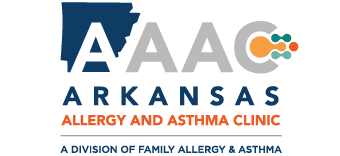Your Allergy Action Plan for a New School Year

Be Ready. Be Safe. Be Confident.
That first email from school or birthday invitation in your child’s backpack might seem ordinary, but when you’re raising a child with a food allergy, it can trigger a rush of concern.
Because for allergy families, it’s never just about cupcakes or lunchboxes, it’s about risk. One overlooked ingredient, one innocent bite, can change everything.
A staggering number of children end up in the ER every few minutes due to severe food allergy reactions, and it’s often from everyday encounters like school snacks, classroom parties, or untrained adults.
Feeling anxious? That’s valid. But you don’t have to stay there.
This guide from the Allergy and Asthma Centre (AAC) is here to walk with you through each part of your school year journey, arming you with tips, tools, and templates to help your child stay protected and included.
Start Strong: What to Do Before School Starts
1. Gather the Essentials
Preparation gives you power. Start by making sure you’ve collected and updated the following critical allergy documents:
- A letter from your allergist confirming diagnosed allergies
- A detailed Emergency Action Plan (EAP) for school staff
- 504 Plan documents to secure accommodations
- Updated prescriptions for EpiPens and antihistamines
Put together a packet for your child’s school team, including the teacher, nurse, and administrators. Be sure to add:
- Copies of the EAP
- A list of allergens with hidden ingredient names
- A clear photo of your child for emergency reference
2. Schedule a Nurse Meeting
It’s important to connect with the school nurse before day one. Use this conversation to clarify:
- Where your child’s emergency medication will be kept
- Whether temporary staff are trained in food allergy treatment
- How parents are notified during allergy-related emergencies
You’re not just sharing facts, you’re building a relationship rooted in teamwork and trust.
Build a Safety Net With Your Child’s Teacher
Make the Conversation a Priority
Kick off the year with a serious, focused meeting with your child’s teacher. Walk them through your child’s unique allergy needs, emergency plan, and the reality of risks like peanut allergy or asthma and allergies flare-ups.
Bring laminated copies of important info, and don’t hold back. Use clear examples like: “If my child is exposed to peanuts, we may have under 15 minutes to respond.”
The more direct and honest you are, the more prepared your child’s teacher can be.
Identify Common Classroom Dangers
Teachers may not recognize everyday risks. Bring attention to things like:
- Shared food during snack time
- Art supplies containing wheat, dairy, or soy
- Surprise birthday treats or holiday goodies
Help them look at the classroom through your child’s lens, where even glue or face paint could become a hazard.
Secure Accommodations With a 504 Plan
A formal 504 Plan helps ensure that safety protocols aren’t optional; they’re required. This could include:
- Allergen-free lunch seating
- Notifications ahead of food-based activities
- Detailed emergency procedures for staff
At AAC, we encourage every allergy family to consider a 504 Plan as part of a proactive allergy care strategy.
Pack Smart: What Goes in the Allergy Safety Kit?
Think of your child’s backpack as more than a school supply holder, it’s their personal protection kit. Be sure it contains:
- Two epinephrine auto-injectors
- Antihistamines (chewable or liquid)
- A laminated emergency care plan
- Hand wipes (not just sanitizer)
- A stash of safe snacks
- Allergy alert cards for new adults
- A medical ID bracelet or wearable tag
Tip: Practice with your child so they know what each item is for, and when to use it.
Making Lunchrooms Safer One Meal at a Time
Cafeterias can be tricky. They’re loud, fast-paced, and full of unknowns. But a little planning can make them safer.
Step 1: Clarify Procedures
Ask the school about:
- Allergen-free tables or designated seating
- How are lunch tables cleaned between groups
- Whether cafeteria staff are trained for allergy reactions
Step 2: Send a Safe Lunch
By packing your child’s meals, you control what they eat. Include disposable utensils, labeled containers, and a reminder to avoid sharing.
Step 3: Teach the Rules
Help your child memorize simple, confident phrases like:
- “I only eat food from home.”
- “If I don’t know what’s in it, I won’t eat it.”
Repetition at home makes these responses feel natural and empowering.
Celebrations Without the Stress
Classroom celebrations should be joyful, not dangerous. But without a plan, they can turn into exclusion zones for kids with allergies.
Plan Safe Treats in Advance
Ask the teacher to keep a labeled stash of approved snacks just for your child. That way, they won’t miss out on birthday fun.
Teach “No, Thank You” Scripts
Help your child rehearse polite refusals like:
- “I have allergies, so I can’t eat that.”
- “No thanks, but I appreciate it!”
Build confidence through pretend scenarios and encouragement.
Ask for Early Event Alerts
A quick email ahead of time gives you the chance to send a safe alternative or discuss food-free celebration ideas with the teacher.
Growing Independence: Teaching Age-Based Allergy Skills
The goal isn’t just to protect, it’s to prepare. Children should feel capable of managing their allergies as they grow. Here’s how to support them at each stage:
Ages 3–5
Start with one golden rule: “Ask a grown-up before eating anything.”
Ages 6–8
Teach symptom awareness: if their mouth feels itchy or their stomach hurts, they should say something right away.
Ages 9–12
Build skills like label reading, speaking up in social settings, and finding help during emergencies.
AAC offers age-appropriate education materials for parents and kids. Visit our site to explore those free tools and handouts.
For Parents of Infants: Don’t Miss This
Introducing new foods to babies can feel overwhelming, especially if there’s a family history of asthma and allergies. Knowing the signs of food allergies in babies is crucial.
Watch for:
- Sudden rash or swelling after eating
- Trouble breathing or excessive coughing
- Diarrhea, vomiting, or unusual fussiness
If you’re wondering what to do if baby has allergic reaction to new food, the first step is to stop feeding and contact your doctor. If symptoms are severe or involve the airway, don’t hesitate. Call emergency services immediately.
AAC’s pediatric allergy specialists are available to help you create a safe introduction plan for high-risk foods, including peanut allergy exposure protocols.
Don’t Overlook Allergic Asthma
Many children with food allergies also have asthma, and that combination can be dangerous if unmanaged. Wondering, is allergic asthma dangerous? The short answer: yes, especially during severe allergic reactions where asthma symptoms complicate breathing.
AAC provides integrated treatment for allergic asthma, food sensitivities, and other triggers, so families don’t have to coordinate care across multiple providers.
You’ve Got This, And AAC Has Your Back
As a parent, you’re carrying a lot. But you’re not alone.
The Allergy and Asthma Centre has helped thousands of families turn fear into strategy. We provide more than allergy tests; we offer lifelong plans, community education, and customized tools to make each school year safer.
From preschoolers to pre-teens, AAC supports every stage of your child’s allergy journey with compassion and precision.
Grab Your Free Allergy Survival Kit
We know how much effort goes into keeping your child safe. That’s why we created a downloadable Back-to-School Allergy Survival Kit, to take some of the pressure off.
Inside the guide, you’ll find:
- Editable Emergency Plans
- Food introduction logs
- Allergy-safe classroom checklists
- Scripts for teachers and caregivers
- Baby allergy symptom sheets
- Real-life tips from AAC care teams
Learn More With Allergy and Asthma Centre (AAC)
When it comes to your child’s health, confidence starts with clarity. At AAC, we believe in educating, empowering, and walking alongside families every step of the way.
Visit https://allergyandasthmacentre.com to connect with an allergist, download free resources, or book your first allergy assessment.
Because safety shouldn’t feel impossible, and you shouldn’t have to do it alone.


